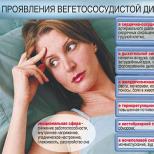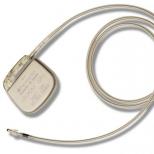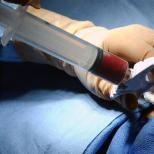ECG indicators and norms in adults and children
The ECG norm is a set of data obtained as a result of a patient's examination and reflecting the adequate work of his heart.
For a long time, the method of electrocardiography has been used in medicine to study possible variants of the norm and identify various pathologies of this organ.
Using this method, the features of the functioning and development of the heart in children and adults were revealed. After analyzing the electrocardiogram, you can make a diagnosis and provide emergency medical care.
Based on the results of the ECG, only an experienced specialist can write a conclusion, but if you have certain knowledge, you can independently understand whether the schedule is normal or there are deviations in it, and then go consult a doctor.
To understand the ECG graph, you need to have at least a general idea of the functioning and structure of the heart.
In humans, this organ, like in other mammals, is divided into 4 chambers:
- on 2 atria, performing auxiliary functions;
- on the 2 ventricles, where the main work is performed.
The right and left sides of the heart are significantly different. Blood in the human body runs through 2 circles of blood circulation: large and small.
The left ventricle supplies blood to a large circle, while receiving a significant load, which is harder than the work of the right ventricle.
Thus, it turns out that after such work, the left side of the organ is more developed than the right. Despite these differences, the departments of the heart work harmoniously and harmoniously.
The structures of the organ also differ in electrical activity. They can be divided into actively contracting structures (myocardium) and non-contracting structures (valves, vessels, nerves, and fat).
These elements differ in the degree of electrical susceptibility.
The work of the heart is characterized by certain features:
- Automatism - spontaneous generation of impulses that cause excitation of the heart;
- Excitability - the ability to be activated by the impact of impulses;
- Conductivity - the ability to conduct impulses to contractile structures;
- Contractility - the ability to contract and relax through the control of exciting impulses;
- Tonicity, providing a constant cyclical work of the heart.
Uniform electrical impulses are the result of cyclic mutual substitution of K and Na ions, which contribute to the effects of repolarization and depolarization, due to which contractions of the heart muscle occur.
Excitation gradually spreads to all parts of the heart. It begins in the sinus node, and then is carried through the organ systems to the ventricles.
Due to the fact that the whole body has a certain electrical conductivity, these biocurrents can be recorded and recorded as an electrocardiogram.
The work of each department of the heart is visible on the graph in the form of peaks and intervals. The most diagnostic intervals and waves are: QRS, R, QT and PQ.
When undergoing a routine electrocardiography procedure, exercise should be avoided prior to the examination. This will corrupt the diagnostic data.

Sometimes a special examination may be required, during which, under load, the features of the functioning of the heart are studied.
But, as a rule, such studies already presuppose the existence of problems in the cardiovascular system. At the same time, the load test is contraindicated in certain diseases.
Fundamentals of cardiography
The ECG results are represented by curved lines with sharp and soft teeth. All elements have their own meaning.
The teeth are negative, located at the bottom of the graph, or positive, located at the top. They are also divided into R and T waves.
Rs show the features of the functioning of the atria, and Ts show the restorative abilities of the myocardium.
The graph consists of segments - gaps between adjacent teeth. Significant elements for analysis are the PQ and ST segments.
The length of the ST segment reflects the pulse rate. Features of the PQ segment show the specifics of the conduction of the biopotential from the ventricular node to the atrium.
Intervals in an ECG are segments that include both a wave and a segment. Diagnostically significant is a complex of similar segments and peaks - the ventricular QRST complex.
It is represented by the QRS complex and the S-T segment. Normally, the duration of all components should not exceed 0.1 s. To detect abnormalities in the work of the heart, the PQ interval and the QT interval play an important role.
Interpretation of ECG readings
The cardiogram contains 12 curves. During its decoding, attention should be paid to the most important diagnostic indicators: the features of the teeth, the duration and frequency of the ST, QT, PQ segments, QRS complexes, and you also need to track the specifics of the conduction of the intervals, the electrical axis, the frequency and rhythm of heart contractions.
Each cell on the graph represents a period of time. By default, when creating an ECG, a speed of 25 mm / s is implied. A cell of 1 mm in the figure is equal to 0.04 seconds.
By studying the RQ, PQ and QT intervals and calculating the sums of cells between the R waves, it is possible to calculate the main features of the patient's heartbeat.
The normal heart rate is 60-90 beats per minute. Naturally, such an indicator will be normal only at rest. After the load, the data will be completely different.
During and immediately after the exercise test, the heart rate under load should not exceed the result calculated by the formula: 200 - the patient's age (the formula is not designed for children).
Another important characteristic of the pulse is its rhythm, normally it will appear in equal intervals between the R waves. Even after a load, the heart should work rhythmically.
The electrical axis normally should not have sharp shifts (its direction can be estimated through the total QRS vector). Analyzing the P waves, the doctor determines the source of activation of the heart muscle.
Description of the ECG indicators is normal: the heart rate is defined as sinus; The normal heart rate is considered to be between 60 and 90 beats per minute.
The QT interval should be 390 - 450 ms. If the QT intervals are prolonged, the doctor may suspect rheumatism, myocarditis, atherosclerosis, or CAD. A shortened QT interval is a sign of hypercalcemia.
The electrical axis of the heart is calculated from the isoline. The peaks of the teeth are taken as the basis. Normally, it is expected to see the predominance of R peak values over S. If the ratio is inverse, there is a possibility of pathology.
When examining the QRS complex, attention is drawn to its length (maximum 120 ms), as well as the absence of an abnormal Q peak. With a shift in the QRS interval, partial or complete blockade of the bundle of His bundle or conduction disturbance can be assumed.
ST is normally located on the isoline. The T wave is directed upward, creating a certain asymmetry.
A positive P wave demonstrates left and right atrial depolarization. We can say that this tooth is divided in half: one part of it reflects the excitation of the left atrium, and the other - the right one.
A negative Q wave reflects the condition of the interventricular septum. The R wave can determine the activation of the upper heart. It shows the activity of the ventricles.
This tooth should normally be clearly distinguished in each lead. S must always point downwards. Normally, the height of this tooth is approximately 2 cm. Particular attention is paid to the ST segment.
In the first and second leads, the T wave has a positive value, and on the segment VR it is negative.
The combination of QRS peaks demonstrates ventricular depolarization. According to the T wave, the extinction of their excitation can be assessed.
These are general indicators with decoding rules, according to which the doctor can evaluate the functioning of the heart and draw up a conclusion.
At the same time, the norm indicators will differ in children and in adults, at rest and after exercise.
Norm indicators in adults and children
Diagnosing the location of the teeth on the graph and calculating the width between the large R waves are the main data for analysis, on the basis of which conclusions can be drawn about the work of the heart of an adult.
The difference in height between the R teeth must not exceed 10%. In an ideal situation, the indicators should be the same throughout the graph.
The table of norms of ECG indicators in adults is presented below:
| P | No more than 0.1 s |
| Pulse | sinus |
| heart rate | 60 - 90 beats per minute |
| RR | 0,62 – 0,66 – 0,6 |
| QT | Not higher than 0.4 s |
| QRS | 0.06 - 0.1 s |
| PQ | 0.12 - 0.2 s |
Under load, the indicators will change, so other standards should be applied, and depending on age, they will differ.
For example, at the age of 20, the heart rate after a load on the simulator can reach 180 beats per minute within the normal range, while at the age of 40 this indicator is already unacceptable.
Children's norms will be very different. This is due to the fact that in the process of growth and development, the body undergoes certain changes.
It is important to monitor the correct development of CVS in children in the process of growing up and to conduct preventive examinations.
At different ages, a child has different ECG values \u200b\u200bmay change, and still this will be considered the norm. The following are general indicators, but identifying norms in children is somewhat more difficult than in adults.
In children, the heart rate should be higher than in adults. The younger the child, the greater the difference from adult norms.
In a baby under 3 years old, the pulse can be up to 110 beats per minute.
After, at the age of 3 to 5, these rates decrease to 100 beats per minute. Adolescents have normal adult heart rate results.
The rhythm of the heartbeat in children, as in adults, should normally be sinus. In childhood, the maximum value of the P wave will not exceed 0.1 s.
QRS values should be within 0.6 - 0.1 s. Normal PQ values in children are around 0.2 s. QT must be less than 0.4 s.
Such knowledge can help you independently see the first signs of abnormalities in the ECG chart in adults and children.
Only a specialist can give the final decoding, but knowing some concepts (QRS, QT, PQ), you can better understand the doctor's conclusion.





